Positioning
At the end of September 2013, Asus has released the device PadFone Infinity, consisting of a smartphone and tablet (“e-frame” with the battery).On sale in Russia, he entered the end of November 13th of the year. Unfortunately, for me personally phone and docking station did not become sold separately, though in itself a smartphone rather good and original. Also restricts price – 34 000 rubles. But it’s the lyrics, it is necessary to explain the difference between the previous and novelty gadget with quite logical prefix «The new».
Package Includes:
- Phone
- Charger
- USB-cable
- Headphones
- Docking Station
Device PadFone Infinity 2 received an updated version of the firmware (4.1 to 4.2). Developers slightly redesigned camera software. Despite this, virtually no significant changes observed. Probably have to wait for “coming” fresh firmware. As you know, in the PadFone Infinity used or 32 GB of internal memory, or 64 GB. The novelty it was slightly less (16 GB and 32 GB, however, to see the sale of only 32), but the unit got very necessary slot – to install a microSD card up to 64GB. The most significant change occurred in the “heart» Asus PadFone, ie chipset. Instead quite popular Qualcomm Snapdragon 600 2 Infinity started using one of the fastest chip to date – Snapdragon 800. Overall, the upgrade went pleasant, but, in my opinion, is not so interesting for the end user. It’s like with iPhone 5S: everything seems to be cool, and in fact went 5-ka ![]()
Design, size, controls
Describe in detail the appearance of the device will not, because it is not much different from the appearance of the previous flagship device, but I will say that the smartphone market at the moment there are very few original uses of metal enclosures. Here is aluminum with vertical grinding that is pleasing aesthetically. At first glance it seems that the metal body, but if you look closely, the rear socket covers only the back side and lateral sides and bottom – separate metal insert. The upper and lower ends – plastic inserts are made of this material for better signal transmission.These elements are slightly different in colors: top and bottom – dark gray, bronze casts and cover. The face of Kant passes a thin plastic bezel.Some special functional load shall not be: increases and so does not the smallest thickness of the device – 8.9 mm. Although large metal smartphone is quite normal. By the way, about the size. They are, alas, perhaps, fortunately, have not changed:
- Asus PadFone Infinity (The new) - 143.5 x 72.8 x 8.9 mm, weight – 145 g
- Asus PadFone Infinity - 143.5 x 72.8 x 8.9 mm, weight – 141 g
- Meizu MX3 - 139 x 71.9 x 9.1mm, weight – 147 g
- Apple iPhone 5S - 123.8 x 58.6 x 7.6 mm, 112 g
- HTC One - 137.4 x 68.2 x 9.3 mm, 143 g
- Nokia Lumia 1020 - 130.4 x 71.4 x 10.4 mm, 158 g
- Samsung Galaxy Note 3 - 151.2 x 79.2 x 8.3 mm, 168 g
- Samsung Galaxy S4 - 136.6 x 69.8 x 7.9 mm, 130 g
- Sony Xperia Z1 - 144 x 74 x 8.5 mm, 170 g
If we compare the size with the other “top-end” devices, then, as you can see, many of them little more compact than the Asus.
Materials PadFone Infinity 2 quality: a few weeks of active use on the rear panel there is not a scratch, dent or chips. Screen also remained intact, despite the fact that the machine is usually in a backpack with other test devices. This is understandable: the glass surface is protected by Corning Gorilla Glass (the manufacturers do not modify). Thanks to a special layer (HCLR Film Anti-fingerprint coating) on the screen prints remain though, but almost invisible. On the metal cover them too much to be seen.
Building a new PadFone Infinity great. I was unable to achieve backlash and creaking housing torsional also nothing terrible happens – felt solidity.In his hand is good thanks to the sloping edges and a smooth cover.
However, if the manufacturer has reduced slightly beyond the screen top and bottom, the gadget would be more convenient to handle.
On top of the front panel is the voice speaker. It is covered with decorative metal rectangular inset. The speaker volume is high, listened mostly mids interlocutor can hear clearly and legibly. Echo and other extraneous sounds are absent.
To the left of the speaker – front camera, right – light sensors and proximity. They work quite correctly, but you can adjust the brightness and it would be a little faster. Below the display is engraved gray «ASUS». If no logo is on the front side PadFone would look like any other touchscreen phone. Over logo – three touch buttons “Back”, “Home” and challenge previously running applications. From my perspective, the last button is better to assign the call menu. As it turns more functional and applications are available by long pressing on the “House”. By the way, this combination launches specialty menu with a choice of “fast” applications, appointed in advance in the same program: 5 slots for any “APPS” and 4 fixed – “Voice Search», «Google Now», «Menu” settings “fast” applications.
At the lower end are the main microphone and micro-USB-connector. On the top – the second microphone and 3.5 mm audio jack for headphones.On the left are metal sled nanoSIM-card. For what and why Asus put “nano-SIM” I do not know: I understand when this slot is used in iPhone (small size, thin body, light weight), but no problems here would fit the usual mini-or microSIM. For example, I am tormented with “nano” as corny without changing your service provider is not anywhere else to put this “Simcoe”.
Just below – the memory card slot. Pleasant innovation. Covered with a metal cap slot.
Handsfree speaker, no matter how it was strange to be on the right side above. He took a metal mesh. Below – the power button (thin, small but comfortable) and key-volume rocker.
On the back side there are: eye of the camera, framed by a metal insert, flash and embossed inscription «Padfone». In official sources, the word «PadFone» is spelled with a capital letter «F», and on the device with little reason.
If we talk about the dock, it causes much less emotion because its appearance is quite primitive: a black bezel with a thick frames (almost 20 mm), rather big size, large thickness, plastic rear surface “soft touch”. Dimensions «Pad» – 264,6 h181, 6×10, 6 mm (at its thickest point – 16 mm). With the phone weighs about 680 grams.
Sloping side of the device, the materials are pleasant, comfortable to hold with two hands, one can even, good display frame let you do it without much difficulty. Frame, which is set smartphone is made of metal and rubberized surface inside. Shield Mark, but should be removed easily. Body does not creak, the assembly is not satisfactory.
On the front side – camera for video calls, top left – button lock / unlock the screen (flat, almost recessed into the body), key-volume rocker – left, right – speaker grille (it alone here), bottom right – micro-USB connector .
Smartphone is easily inserted into the dock, and is firmly in the slot. No special movements for seizures do not need to make the phone, you need to gently housing for “Smart” pull up.
Displays
Asus PadFone smartphone equipped with a screen that has a diagonal of 5 inches (physical size – 62h110 mm). To date, this standard almost all flagship devices at the end of 2013 and beginning of 2014. I really hope that within 5 inches standard does not “crawl” ![]() Resolution predictable – FullHD (1920×1080 pixels), the density – 441 pixels per inch, of course, with this amount of pixelation point invisible. Here set IPS-matrix of very high quality: any angle picture is not distorted, even brightness is practically unchanged. Although the test pictures show that all is not so rosy.
Resolution predictable – FullHD (1920×1080 pixels), the density – 441 pixels per inch, of course, with this amount of pixelation point invisible. Here set IPS-matrix of very high quality: any angle picture is not distorted, even brightness is practically unchanged. Although the test pictures show that all is not so rosy.
Capacitive touch layer, fulfills up to 10 simultaneous touches. Sensitivity is very high.
It seemed to me that the matrix PadFone displays full image without any kinks. Black color is quite deep, clean white. Matrix backlight brightness can be set manually or automatically. Control range is not the greatest: the minimum brightness still want to do less, for example, at night.
In the settings screen there is the item “Read mode”. Consists of two switches: the regime of image and text, text-only mode. When you activate the first white color becomes warmer, and when the second gets very warm shades. You can select the program that will work with these settings screen.
Another feature – the application Splendid. With it you can adjust the temperature and brightness, as well as to include the regime «Vivid» (saturated colors).
Battery
As implied use Asus PadFone Infinity in pairing mode (plus smartphone docking station), the manufacturer decided to build not only the battery in the phone, but in the “tablet.” The smartphone uses non-removable lithium-polymer battery 2400 mAh, and a docking station – the same type, but with a larger capacity – 5000 mAh, 18.5 Wh.
Results smartphone:
- 1080p video playback (“mix” of different formats – MP4, MPG, AVI) at maximum brightness and the volume in the headphones – 6 hours and 40 minutes
- Browsing through Wi-Fi – about 10 hours
- Browsing through 3G – about 8 hours
- The total average time of the device (3G, calls, sms, emails, twitter) – about 9:00
- Games – about 2 hours 30 minutes
Results of the “smart phone in the dock”:
- 720p video playback (“mix” of different formats – MP4, MPG, AVI) at maximum screen brightness and volume in headphones – about 8 hours
- Browsing through Wi-Fi – about 15 hours
- Browsing through 3G – about 12 hours
- The total average time of the device (3G, calls, sms, emails, twitter) – about 17 hours
In the setting of the dock, you can choose these parameters at which it will act as a charger.
Memory and memory card
This model uses 2 GB RAM (32-bit dual-channel 800 MHz LPDDR3). In the previous generation was a two-channel 533MHz LPDDR2. The smartphone is a new generation of free-usually around 900 MB of RAM.
Internal memory was less – 16 and 32 GB. Online only saw 32 GB. However, do not despair, because a manufacturer established in Infinity 2 memory card slot microSD. By the way, a rare case when “top” of the smartphone has a slot for memory cards.
Camera
Traditionally, there are two camera modules: core 13 MP, 2 MP front. Yet there is a camera in the docking station, but it is much easier – 1 MP. Both cameras on a smartphone equipped with decent aperture lenses with an aperture of F2.0.
The maximum resolution that can “shoot” the main camera – 4160h3120 pixels, front – 1088h1920 pixels. The minimum value of ISO – 50, maximum – 1100 (by hand – 800).
Among Asus tried to invent something similar technology in Nokia PureView or UltraPixel in HTC. This thing called PixelMaster, and the bottom line is that the camera software combines pixels in such a way that a (in theory) a sharp and clear picture in 3-megapixel resolution (2080×1560 pixels).In practice, we just get a 3 megapixel photos with a slight increase, in fact – “CROP”. Perhaps some improvement there, but a normal user would be extremely difficult to tell the difference.
If we talk about the camera Asus PadFone Infinity 2 in general, it has left a positive impression. Until Samsung Galaxy S4, LG G2, Sony Xperia Z1 and some others, it does not hold out, but takes quite well: a little noise, white balance is not “lying”, focusing accuracy and speed are great.
Settings for shooting a huge amount of photos: Auto mode, HDR, retouch portraits, panorama, night shots, intelligent removal of unwanted objects, shot with a smile, create animation file (GIF), a variety of color effects. Furthermore, exhibiting the value of ISO, white balance, exposure.
Videography conducted at a maximum resolution of 1920×1080 pixels. You can change the number of frames: 30 f / s or 60 f / s (the actual number of frames – 40). Sharp picture quality is excellent. Sound is recorded in stereo, it was clean, but could hear the noise is used to cut off the program “squelch.”
Feature video:
- File Format: MP4
- Video Codec: AVC, 17 Mbit / s
- Resolution: 1920 x 1080, 25 f / s
- Audio Codec: AAC, 96 kbit / s
- Channels: 2 channels, 48 kHz
Performance and software platform
Modern flagship unit – modern and powerful “iron”! In Asus PadFone Infinity new generation, the most recent to date hardware platform from Qualcomm – Snapdragon 800. Model Number MSM8974, process technology – 28 nm HPm (“high performance for mobile applications”), ARMv7, Krait processor 400 (quad core), as a graphic accelerator Adreno 330 acts. Similarly, “outfitted» LG G2, Samsung Galaxy Note 3 LTE, recently released Acer Liquid S2, Nokia Lumia 1520 popular Nexus 5 and many others.
About the performance of virtually nothing to say, because at the moment the chip is one of the top. Shorter, steeper than you can imagine.Some detail about the system, user interface and other matters described in this review Eugene Vildyaev previous PadFone.
At the time of writing the phone system was installed Google Android version 4.2.2. No updates for the period of testing is not “flies”. Sadly, I would like to see is at least Android version 4.3
Multimedia
Music player and radio. To listen to music using all the usual Play Music app. If everything is clear with the music (the sound is loud, clean, perhaps a little lacking bass), then having problems with the radio. The fact that no station has not been “caught”: all noise in the headphones ![]()
Video player “cool” everything in all resolutions. The device supports from the “box” and AVI, and MPG, and MKV. Audio codecs not so much. It is therefore easier to install something like MX Video Player.
The speaker volume is low, and if the hole is covered, and did not hear anything. The speaker volume is in the docking station is very high sound quality even heard basovitye notes.
Conclusion
Update PadFone Infinity company Asus came out successful: here you and cool the chipset, and memory card slot, and new software for the camera, and improves the quality of images, and a new version of Android. One can only understand what audience designed this device, what positioning? But the answer to this question in the test device, I could not. I think that if PadFone sold separately from the dock, he would find a lot more fans, because for 34,000 rubles, not every user can afford this unit. At the start of the price was justified, it is now high.
For 20 – 24 000 rubles easily find LG G2, Sony Xperia Z1, then add another 10 000 and take the Nexus 7 (2013). And if you do not bother much with the chipset, buy Samsung Galaxy S4, Meizu MX3 or HTC One. By the way, stop and iPad.
Pros Asus PadFone Infinity 2:
- Powerful chipset
- Quality materials
- Docking Station Included
- Great value matrix screen
- Good camera
- Memory card slot
- LTE
Cons Asus PadFone Infinity 2:
- Price
- NanoSIM
- Quiet speaker phone
Features:
- Class: smartphone
- Materials: plastic, metal and glass
- Operating system: Google Android 4.2.2
- CPU: 4 core, Qualcomm Snapdragon 800
- RAM: 2 GB
- Data Memory: 16/32 GB
- Connectivity: Wi-Fi (b / g / n), Bluetooth 4.0, LTE, 3.5 mm headset jack
- Screen: capacitive, IPS-LCD with a resolution of 1080×1920 pixels
- Camera: 13 MP (main), 2-megapixel (front)
- Extras: accelerometer, light sensor and proximity, gyroscope, digital compass
- Battery: removable, Capacity 2400 mAh
- Dimensions: 143.5 x 72.8 x 8.9 mm
- Weight: 145 g
- Price: 34 000 rubles (Q4 2013, Q1 2014)
Review Asus PadFone Infinity (The new)
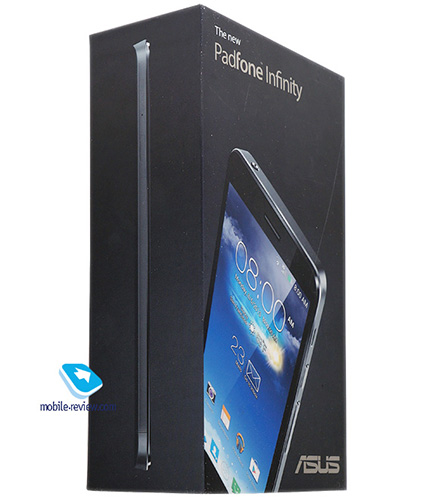
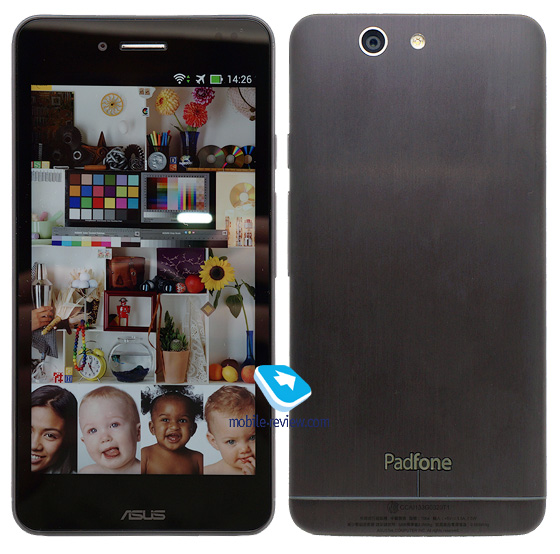
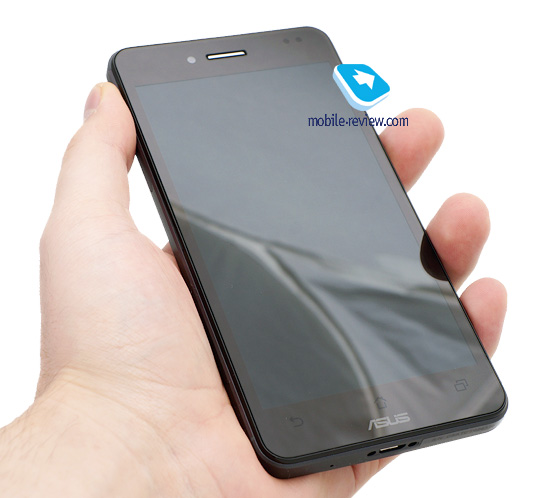
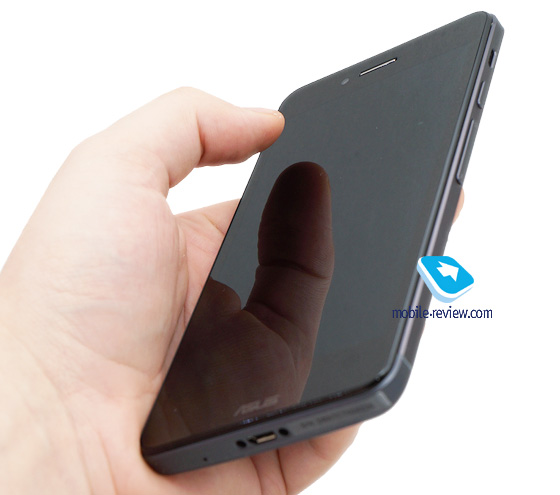
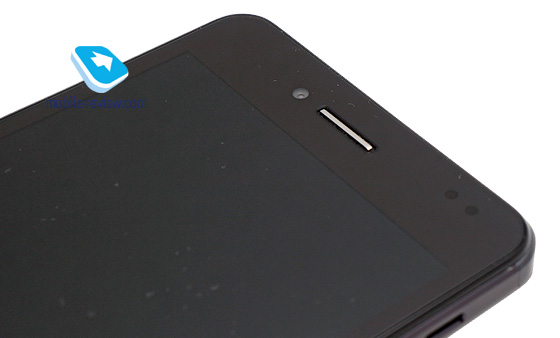
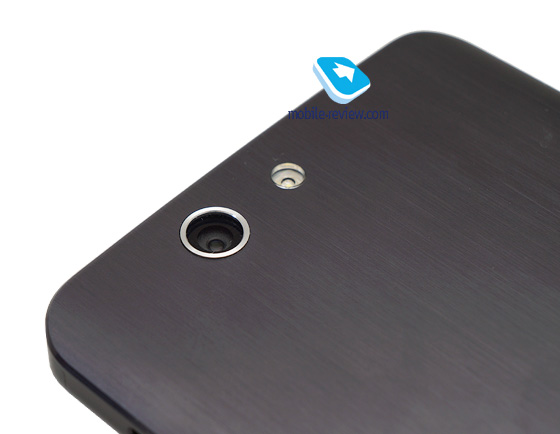
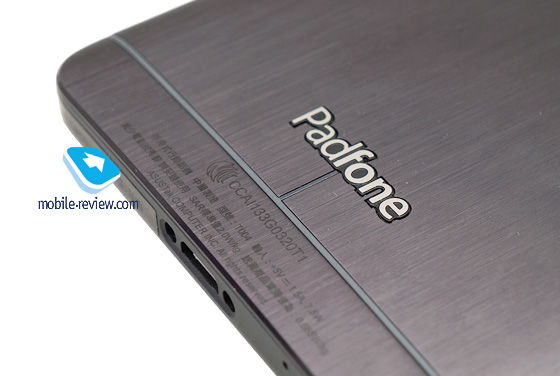
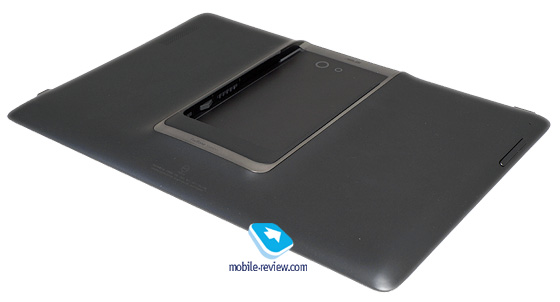
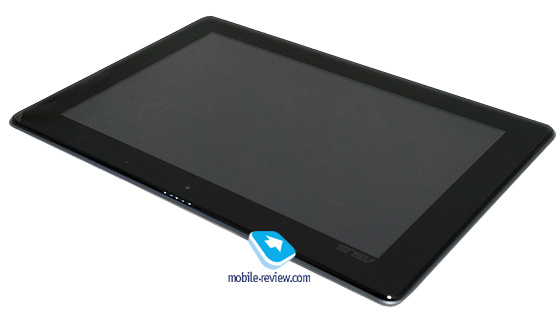
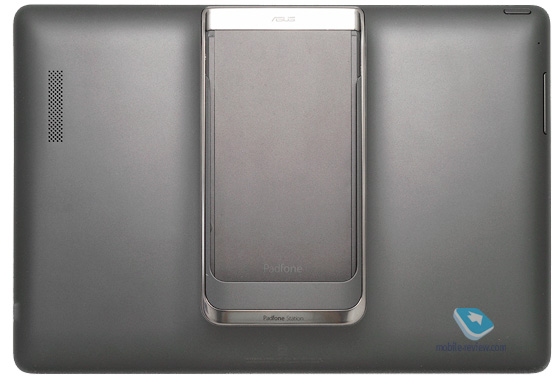
No comments:
Post a Comment